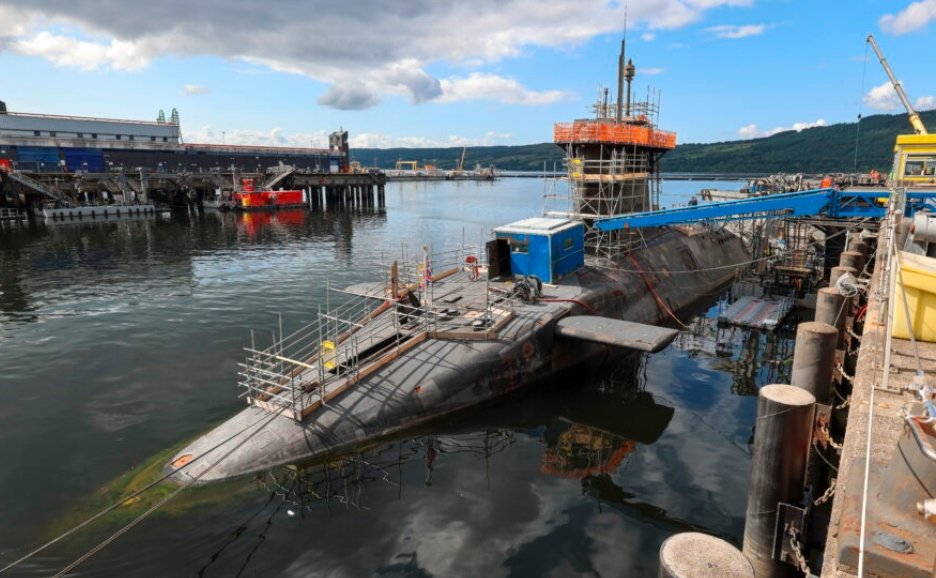The UK government has unveiled a major Defence Growth Deal for Scotland, injecting a share of £250 million to spark job creation and innovation in key sectors like maritime and space technology. Announced on September 7, 2025, this initiative aims to strengthen local partnerships, drive economic growth, and support the armed forces amid rising global defence needs.
Deal Promises Thousands of New Jobs
Scotland stands to gain big from this fresh funding push. The deal builds on the nation’s strong defence industry, which already employs over 11,000 people through Ministry of Defence spending. Officials say it will create highly skilled roles in engineering, research, and manufacturing.
This comes at a key time. Recent data shows the UK defence sector added thousands of jobs last year, with Scotland’s shipbuilding hubs like the Clyde leading the way. The government points to a £10 billion shipbuilding contract awarded just last week as proof of the sector’s momentum. That deal alone is set to secure work for years.
Experts predict the growth deal could add hundreds of positions in the first year alone. It ties into broader plans to raise defence spending to 2.6 percent of GDP by 2027, with ambitions for 3 percent later. This funding will help small businesses and startups tap into military tech needs.
Local leaders welcome the move. They see it as a way to turn Scotland’s academic strengths into real economic wins. Universities like Glasgow and Strathclyde are already hubs for cutting edge research in areas that overlap with defence.

Focus on Innovation in Space and Maritime Sectors
The deal targets Scotland’s standout areas in space and maritime tech. The nation hosts growing clusters around the Clyde and Rosyth, where shipbuilding meets new innovations like autonomous vessels and satellite systems.
This push aligns with global trends. Space tech is booming worldwide, with the UK aiming to capture more of the market. Scotland’s space sector has seen rapid growth, launching small satellites and developing launch sites in recent years.
Maritime innovation gets a spotlight too. The deal will fund projects that blend traditional skills with modern tech, such as advanced materials for ships or AI driven navigation.
- Key innovation areas include satellite manufacturing and deep sea exploration tools.
- Partnerships will link businesses with universities for joint research.
- Funding supports startups in dual use tech, useful for both civilian and military needs.
These efforts aim to make Scotland a global leader in defence tech. The government expects this to attract foreign investment, building on £1.4 billion already poured into UK defence since July 2024.
Partnership Between Governments and Industry
This growth deal marks a new level of teamwork. It brings together the UK government, Scottish authorities, businesses, and research groups. The goal is to harness local strengths for national security and economic gains.
Defence Secretary John Healey highlighted the strategy during the launch. He stressed how it will make the UK the top spot for defence firms to grow. Chancellor Rachel Reeves added that it’s about creating good jobs that pay well across the country.
Scotland Secretary Douglas Alexander noted the defence dividend. He linked it to recent wins like the Clydeside contract, showing what committed leadership can achieve.
The deal will roll out in coming months. Stakeholders will tailor it to Scotland’s unique assets, ensuring funds go where they can do the most good.
This collaboration extends beyond borders. It supports UK wide goals, with similar deals planned for England, Wales, and Northern Ireland. Together, they form part of the Defence Industrial Strategy to boost the entire economy.
Economic Impact and Future Outlook
Analysts forecast strong ripple effects from this investment. Scotland’s defence sector already adds £3.2 billion to the economy each year, per recent figures. The new funding could push that higher by fostering innovation and skills training.
Here’s a quick look at projected benefits:
| Aspect | Current Status | Projected Growth by 2027 |
|---|---|---|
| Jobs in Defence | Over 11,000 | Up to 15,000+ with new roles |
| Annual Economic Value | £3.2 billion | Potential rise to £4.5 billion |
| Innovation Funding | Part of £250 million UK-wide | Scotland share: £50-70 million estimate |
| Key Sectors | Maritime, Space | Expanded to include AI and renewables tie-ins |
These numbers come from government estimates and industry reports. They show how the deal could transform local communities, especially in areas like the Highlands and islands.
Looking ahead, this fits into larger UK plans. With global tensions rising, defence spending is up worldwide. The UK aims to stay competitive, using deals like this to build resilience.
It also ties to recent events, such as the push for more apprenticeships in engineering. Programs launched in 2024 have already trained thousands, setting the stage for this growth.
Challenges and Broader Benefits
No plan is without hurdles. Some worry about over reliance on defence spending amid budget pressures. Critics point to past projects that fell short on job creation promises.
Yet supporters argue the benefits outweigh risks. The deal includes safeguards like transparent funding and focus on inclusive growth. It aims to spread opportunities to underrepresented groups and rural areas.
Beyond jobs, it boosts skills. Training programs will prepare workers for high tech roles, helping Scotland compete globally.
This initiative reflects a shift toward using defence as an economic driver. It could inspire similar models in other sectors, like green energy.
What do you think about this defence push for Scotland? Share your views in the comments and spread the word to keep the conversation going.


















